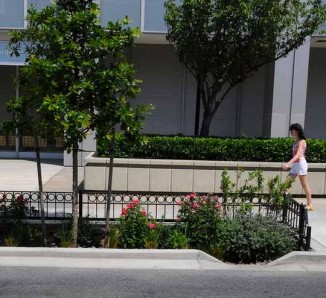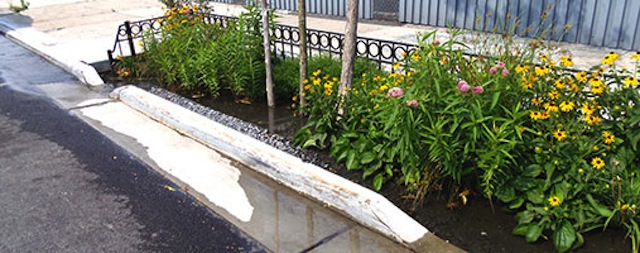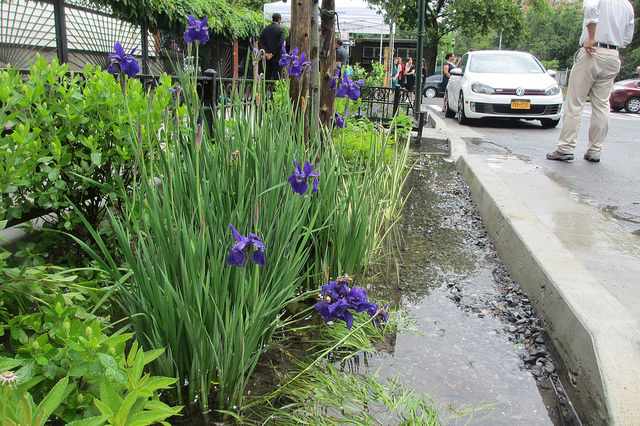Some 250 gardens appeared suddenly along corridors like the one in Brownsville, Brooklyn, planted with flowers, grasses and small trees.
“In what officials have billed as one of the most ambitious programs of its kind in the United States, New York City has, with little fanfare, embarked on a roughly 20-year, $2.4 billion project intended to protect local waterways, relying in large measure on ‘curbside gardens’ that capture and retain storm-water runoff.”
 Over the coming months, the Department of Environmental Protection will expand the Green Infrastructure Program initiated by Mayor Bloomberg, by building 2,000 curbside gardens in Brooklyn, the Bronx and Queens. When construction is completed, the gardens, also called bioswales, will have the capacity to collect and absorb more than 4 million gallons of storm water when it rains. By softening the impervious urban landscape and naturally absorbing rainwater the city hopes to capture more than 200 million gallons of storm water each year, thereby improving the health of the rivers and bays surrounding the city.
Over the coming months, the Department of Environmental Protection will expand the Green Infrastructure Program initiated by Mayor Bloomberg, by building 2,000 curbside gardens in Brooklyn, the Bronx and Queens. When construction is completed, the gardens, also called bioswales, will have the capacity to collect and absorb more than 4 million gallons of storm water when it rains. By softening the impervious urban landscape and naturally absorbing rainwater the city hopes to capture more than 200 million gallons of storm water each year, thereby improving the health of the rivers and bays surrounding the city.
In addition to making boroughs more resilient to extreme flooding, some of these neighborhoods currently have less than average street tree counts and higher than average rates of asthma among young people. The increased tree canopy and vegetation will help to improve air quality, provide shade during hot summer months, and beautify the neighborhoods.
The New York Times says similar gardens have proved effective in other cities, most notably Philadelphia.
(WATCH one of the gardens in action during rainfall below)
(READ a story in the NY Times)
Photos by NYC Department of Environmental Protection





















